Last Updated on September 8, 2025 by Michelle
I love whole grains. They have a special place in my heart. Einkorn has its own special little place in my heart and my wheat berry stash. It’s just a really cool grain, with a neat history, rich in vitamins and minerals, and mills into a dreamy, fine, creamy flour.
It’s an all-around winner in the whole grain department.
But let’s talk about it in-depth.
What is Einkorn?
I don’t get the chance to nerd out over grains very often. In fact, some of my friends think I’m weird if I go off on tangents about certain grains. I mean, grains are grains and flour is flour, right?
Wrong.
Each grain has its own interesting history, its own nutrient profile, its own personality.
For instance, Einkorn is one of the oldest cultivated grains that we still grow today. Einkorn has gained popularity lately because of this fact, but it’s not the only ancient grain that we still cultivate today. However, it’s one of the oldest grains that we can currently trace.
The word “einkorn” literally means “one grain,” which is because of the fact that Einkorn plants only grow one wheat berry per “spike” on the wheat plant, unlike modern wheats which often grow several berries per spike. Along the same lines, Einkorn is generally more expensive than other grains because not only is it simply grown by less farmers, but it also has a lower yield and results in smaller kernels compared to other grains.
But I digress.
In a general sense, Einkorn is simply a whole grain. It’s sold as either wholegrain wheat berries, flour, or in rare cases as cracked or flaked grain. Einkorn wheat berries are small in size and buttery yellow in color. When milled they transform into a creamy, soft, pale yellow flour.
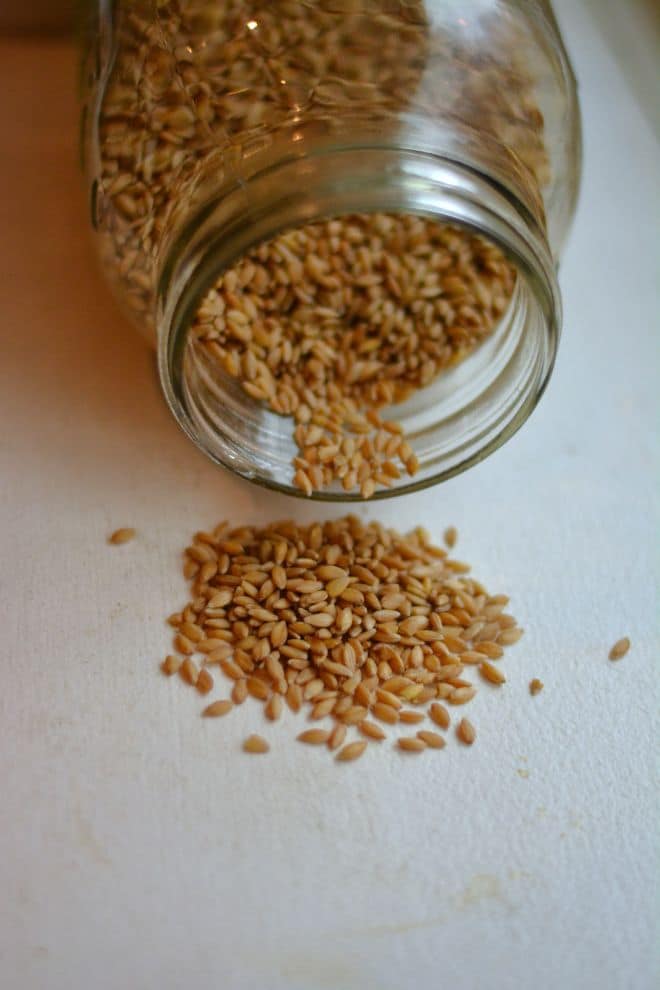
The history of Einkorn
The history of Einkorn starts like any other ancient grain: with a historian.
Thank your local historian, folks, they find us cool things like ancient grains!
While Einkorn was technically never not grown since all the way back in ancient times, it certainly lulled out. Lost popularity. Got overrun and replaced by more modern grain varieties as they were developed. Regardless, Einkorn is a common grain to grow in the fertile crescent, from all the way in ancient times until now. It even grows wild there! It was even discovered in the stomach of a man frozen in the Alps for thousands of years! So it’s safe to say that Einkorn has been a diet staple for a very long time.
In modern years, Einkorn has been carefully revived into a “modern” ancient grain, making it more accessible to the average home miller.
Although Einkorn was one of the first cultivated grains that we’ve found so far, it slowly lost the battle against other grains like Spelt, Emmer, and general wheats because it’s harder to harvest, has less end yield, and is tougher to bake bread with given it’s lower-gluten profile. But thankfully, Einkorn never fully went extinct.
We not have this incredible ancient grain to enjoy in our modern kitchens.
And, who knows? Maybe Einkorn has an ancient cousin somewhere that’s yet to be discovered. The world needs more ancient grains!
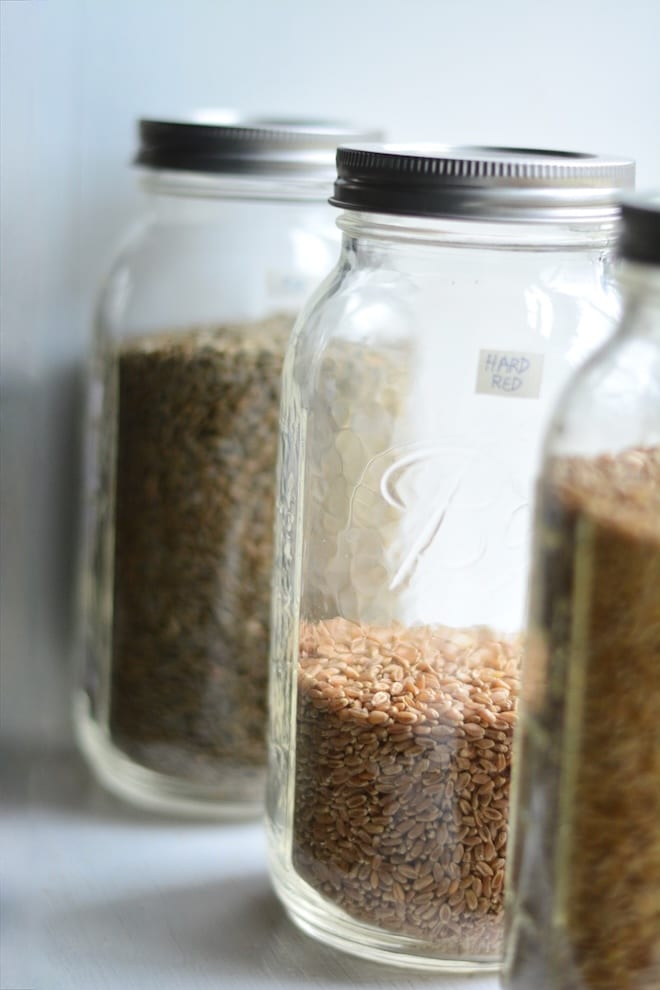
What does Einkorn taste like?
The best way to describe the flavor of Einkorn, in my opinion, is buttery. It has very soft, subtle flavor, but it’s smooth, sweet, ever-so-slightly nutty, and all around delightful. Depending on what you pair Einkorn with, it almost has a honey-like flavor.
It’s my favorite flour to use in homemade crackers, especially knockoff Club crackers because of its sweet, nutty, buttery flavor takes the flavor of homemade crackers to the next level.
Although all grains have their own flavor profile, do keep in mind that the flavor notes we talk about different grains having are often subtle, and vary based on how you use the grains and what they’re paired with. That being said, the flavor of Einkorn really is unparalleled and is one of my personal favorites.
You just have to try it to understand.
Is Einkorn wheat?
Yes, Einkorn is wheat. It’s an ancient type of wheat that has been kept free from most hybridization. That means that it remains (mostly) free from modern changes.
Einkorn is technically classified as a Diploid wheat, making it the only cultivated (not wild) diploid wheat species. This means that Einkorn is only made up of two sets of chromosomes, compared to modern wheat’s three sets of chromosomes. Essentially, this just means that Einkorn has a more simple genetic nature when compared to modern wheat. It’s been bred less for specific characteristics (like thinner husks, larger berry size, faster growing times), and instead is simply grown as-is by less conventional farmers.
Einkorn is a more simple grain, grown by people who simply want to grow food. Farmers focused on grow food faster, bigger, and more profitably will pass Einkorn by.
Einkorn could almost be classified as a species of “wild wheat,” given that it grows wild in some parts of the world, and it’s been barely modified from its natural state. It’s essentially a wild wheat that’s been cultivated just enough to grow on smaller commercial farms in our modern times.
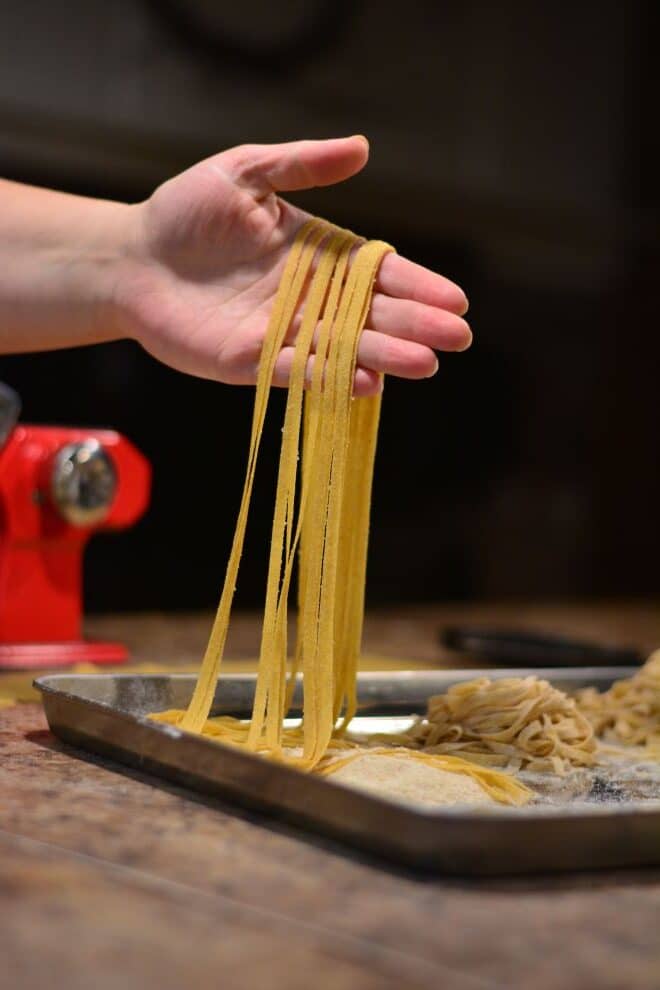
Is Einkorn gluten-free?
Einkorn wheat is NOT gluten-free. It’s still a wheat, and still contains gluten. However, some people claim that the gluten in Einkorn is different from modern grains with a more simple gluten structure, if you will, and some people who claim they’re gluten intolerant can tolerate Einkorn. There is an argument to be made for the simpler nature of Einkorn’s makeup resulting in its gluten structure also being more “simple” and easier to digest.
But in my humble opinion, eating wholegrain Einkorn is similar to eating any wholegrain flour, especially when compared to modern flour. Let me explain.
- Modern flour is stripped of 2/3 of the wheat berry (bran and germ sifted out), heated until there’s essentially no nutrients left, and bleached just to make sure any remaining nutrients are killed.
- Wholegrain, fresh milled flours allow you to eat all three parts of the wheat berry, including the bran and germ, rich in healthy fat, fiber, and all kinds of other vitamins, minerals, and enzymes that help your body process the starchy part (endosperm) of the wheat.
- So in modern, commercial flour your body is left to try to process JUST the starch, without the help of fat and fiber, which can turn modern flour into somewhat of an allergen for your body.
- Compared to wholegrain flour, where your body actually has help processing the starch in the flour. The fat and fiber are an essential part of digestion and allowing your body to actually use and absorb the nutrients in the flour.
So while Einkorn is great, and if you love it and want to use it exclusively, I’m all for it. But if your body tolerates Einkorn and not modern flour, I’d personally argue that it’s as much because of the wholegrain nature of Einkorn as it is because of the ancient-grain status Einkorn has.
Can I make bread with Einkorn flour?
You can absolutely make bread with Einkorn, but there are a couple qualifiers:
- Although Einkorn does have gluten and can be used exclusively to make bread, it has less gluten potential than other grains and won’t rise quite as much.
- Your Einkorn bread will also have a tighter, softer crumb and you might find your bread is less “springy” or less fluffy than it normally would be.
If you’re looking to make bread with exclusively Einkorn flour but want results similar to what you’d get using–say–hard white or red wheat, try adding 1 tablespoon of Vital Wheat Gluten per cup of Einkorn flour you use. This will help give your bread a little “umph.” Not needed, but can help your Einkorn bread turn out better.
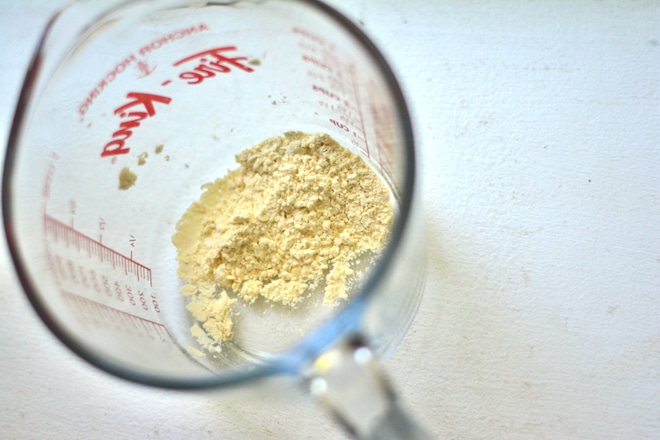
How to use Einkorn flour
The uses for Einkorn flour are almost endless! Some of my favorite ways to use Einkorn are:
- In pancakes and waffles. The buttery flavor is amazing, and the soft texture of the flour makes really fluffy pancakes and crunchy waffles with soft and flaky insides. My favorite pancakes are made 50/50 with buckwheat and Einkorn flours, because I find the strong flavor of buckwheat pairs well with the sweet, buttery flavor of Einkorn.
- In muffins. The best blueberry muffins in the world are just a few cups of Einkorn flour away. Rich, soft, buttery, smooth Einkorn blueberry muffins are a dream! Not to mention that I actually cut the amount of sugar I use in my muffins down when I’m using Einkorn flour–it’s just that buttery sweet!
- In any quick breads. Einkorn banana bread, coffee cake, or pumpkin bread? Forget about it.
- In pasta, especially mixed with Durum flour. You know how the best pasta is a combination of chewy and firm, but still soft and buttery? Einkorn/Durum pasta is the best of both worlds. Hearty, chewy, and firm from the Durum. Soft, buttery, and tender from the Einkorn.
Other noteworthy ways to use Einkorn are in any baked goods at all, like brownies, scones, or cookies. Since Einkorn does have gluten, it can also make bread with a golden hue, soft crumb, and slightly less rise than bread made from modern wheat. It’s also great for making extra-buttery pie crusts or shortbread.
Einkorn baking tips
First of all, as with any whole grain, expect Einkorn flour to require slightly more moisture than you’d use with store bought white flour.
If you’re using Einkorn flour to make bread, considering adding 1 tablespoon of Vital Wheat Gluten per cup of Einkorn flour you’re using, to help give your Einkorn bread some “umph.”
Mix and knead doughs a bit more gently than you normally would. don’t be afraid to still mix and knead your batters and doughs, but do keep in mind that Einkorn has a more tender structure than other grains, and don’t overmix when you can avoid it.
Manage your expectations. Due to the ancient nature of einkorn, you’re simply not going to get as much rise or oven spring from 100% Einkorn as you would with other flours/grains. The incredible flavor will make it all worth it, though!
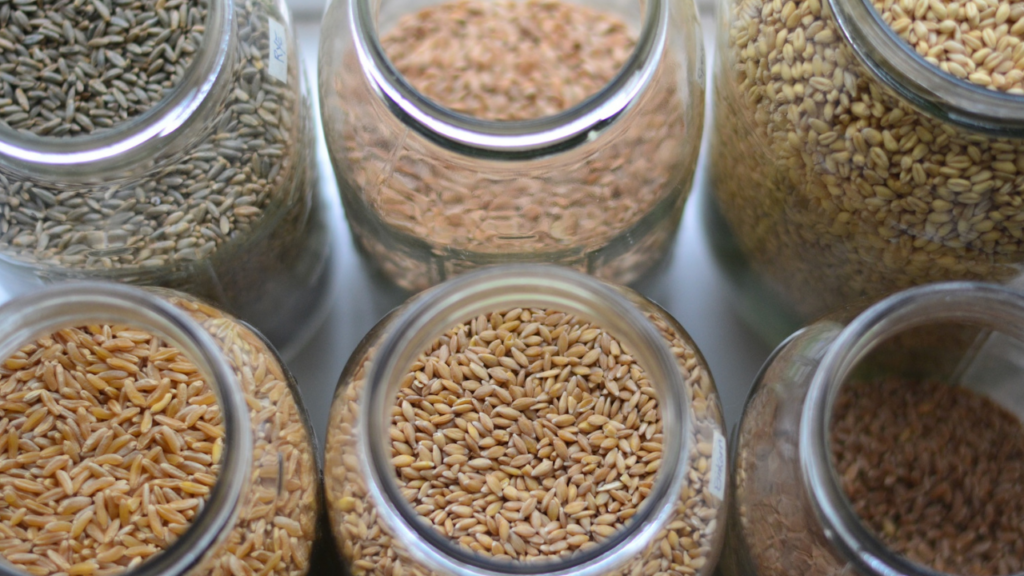
Is Einkorn the best wheat?
Einkorn is one of the oldest cultivated wheats that we have in modern times. Its simple structure and ancient grain status lead many people to claim that it’s the healthiest grain. And it does have a leg up on other grains in some areas. But that doesn’t mean that it’s necessarily THE healthiest grain, or that other whole grains aren’t also really healthy.
- Einkorn is slightly higher in protein than most other grains.
- Einkorn has a lower glycemic index than most modern grains.
- Einkorn may be higher in some antioxidants than other grains.
But the truth is that there isn’t much data yet comparing Einkorn specifically to other whole grains. So while Einkorn is one of my favorite grains to grind into flour, it remains so because of its flavor, texture, and performance in baked goods. The fact that it’s an ancient grain and may be more nutritious than other grains is a bonus in my mind, not the main reason I reach for Einkorn when I’m milling flour.
How to use Einkorn wheat berries
The ways to use whole einkorn wheat berries are almost endless. But here’s a list of my 8 favorite ways to use wholegrain Einkorn wheat berries:
- Cooked like rice and used in soups, stews, casseroles and in place of rice in burrito bowls
- Milled into amazing einkorn flour
- Flaked and used like rolled oats (see next paragraph)
- Sprouted and used on salads, bowls, and soups (or sprouted and dehydrated for milling into flour)
- As a nutritious substitute for risotto
- Cooked and eaten in place of steel cut oats for oatmeal
- Puffed and eaten as cereal or in granola
- Cooked and used in smoothies for a nutritious boost
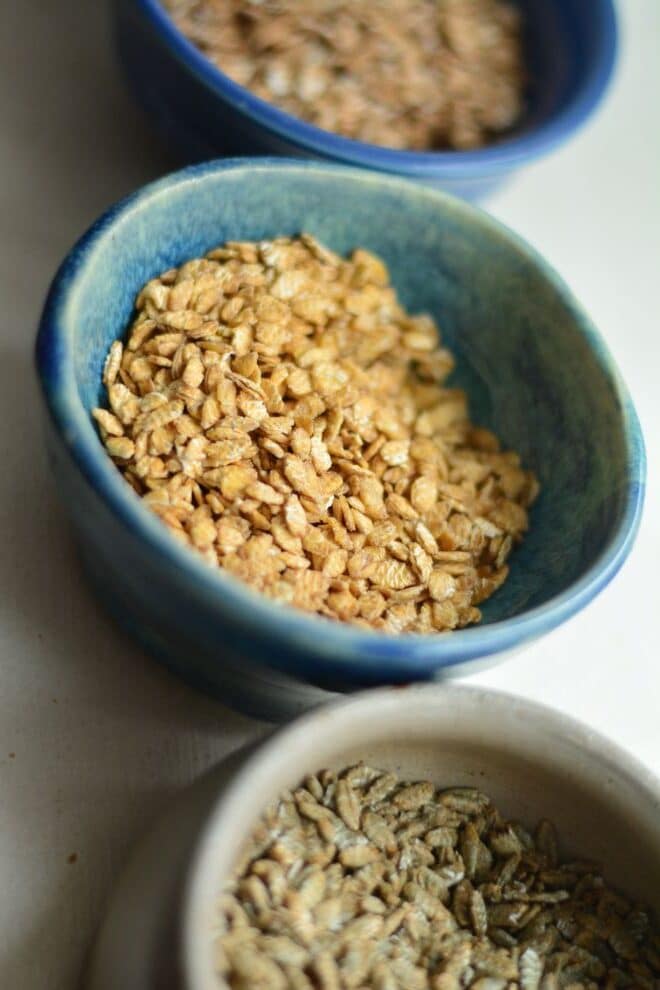
How to flake Einkorn
One of Einkorn’s best kept secrets is that it flakes really well. But let’s back up a second.
What do I even mean by “flaking?”
You know those cardboard containers of rolled oats you’ve been buying your whole life? Much like the way flour is already old and rancid by the time you buy it at the store, flaked oats are essentially “dead” by the time you buy and eat them.
But if you purchase whole oat groats instead of already-flaked oats and flake them yourself, you can get the full benefit of all the incredible nutrition in whole oat groats. Even cooler is that almost any grain can be flaked with a little bit of help, including Einkorn. Your daily bowl of oatmeal just got upgraded. Find out more about my oat flaker here.
Flaking Einkorn like oatmeal can be done in three simple steps:
- Soak your Einkorn wheat berries in filtered water for 4-5 hours.
- Dry them in an oven or dehydrator at 150 degrees for 15-20 minutes. Make sure they’re actually dry to the touch.
- Flake your Einkorn berries through a flaker.
And boom! Just like that you have healthy Einkorn flakes. Use as oatmeal, in breads, as granola or granola bars and in any way you’d use oats!
Just make sure that your Einkorn berries are actually dry from the oven before you try to flake them. Running grains that aren’t dry enough through your flaker can gum up and damage your machine. We don’t want that. The reason they need to be soaked, then dried is because the grains need enough moisture to actually roll/flake without cracking into a million pieces, but need to be dry enough to not gum up your flaker.
Learn more about flaking and how to use an oat flaker to make rolled oats here.
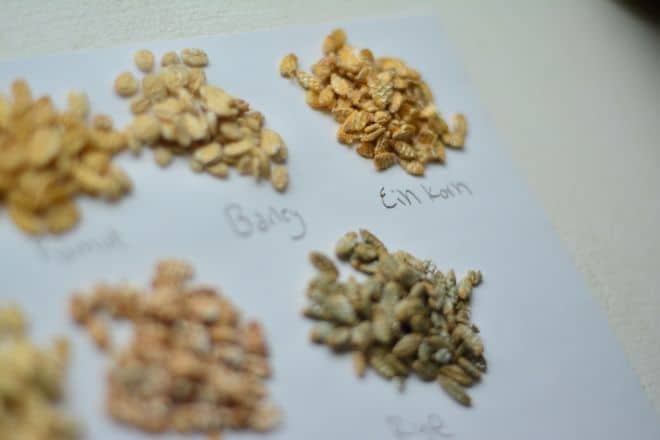
More like Einkorn 101–history, milling, flaking, cooking & more:
- All about alternative grains
- Why I started milling my own flour
- Sourdough with fresh milled flour
- Wheat berries: everything you need to know
Need a grain mill?
These are my top picks. Learn more about how to choose the right grain mill for you here.
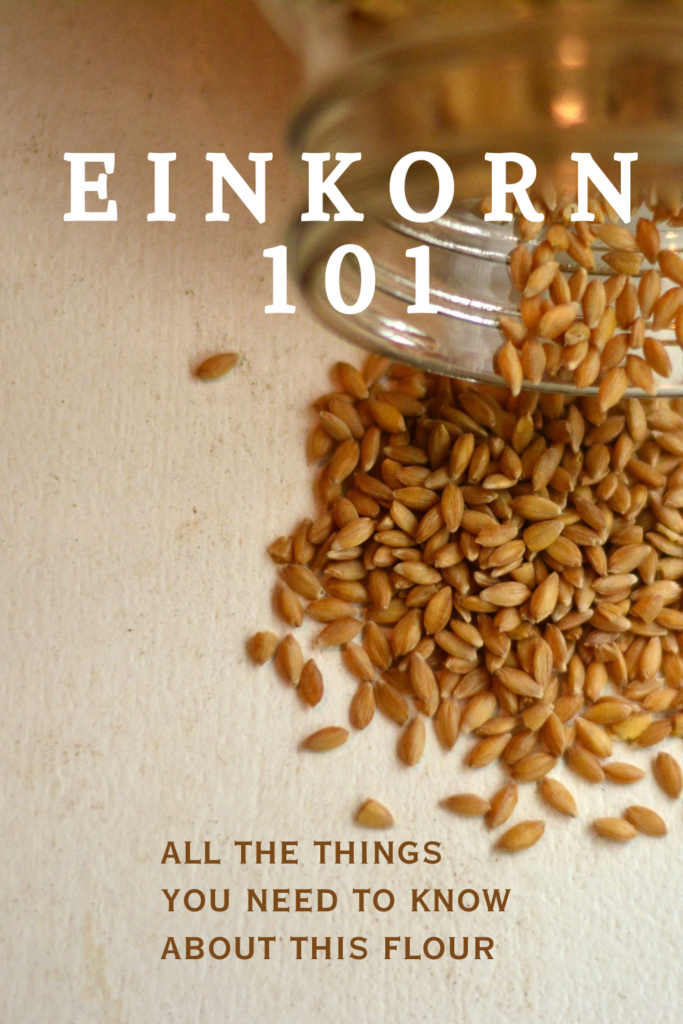
Win a Grain Mill!
Enter to win a grain mill & free access to Fresh Flour University!

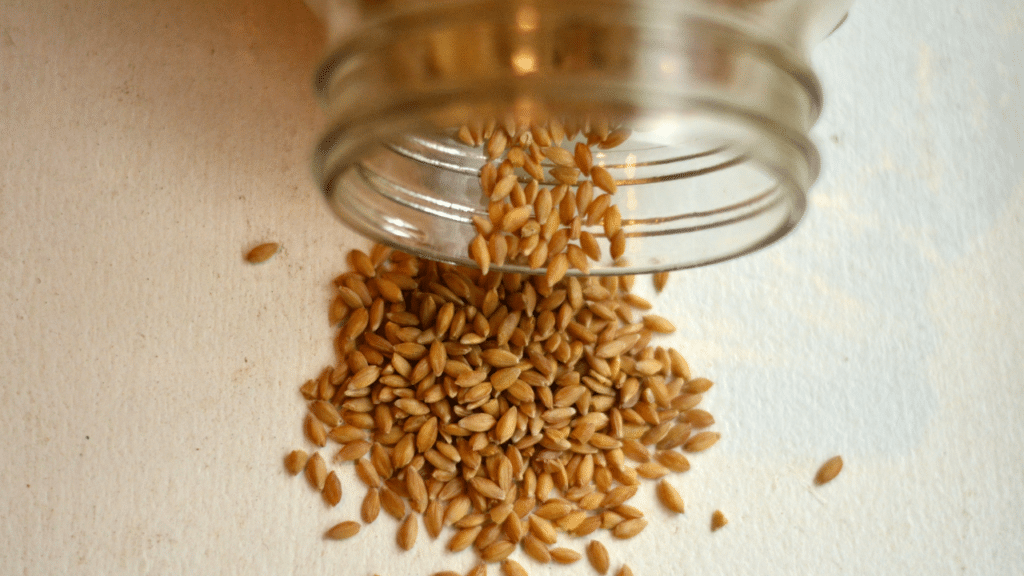


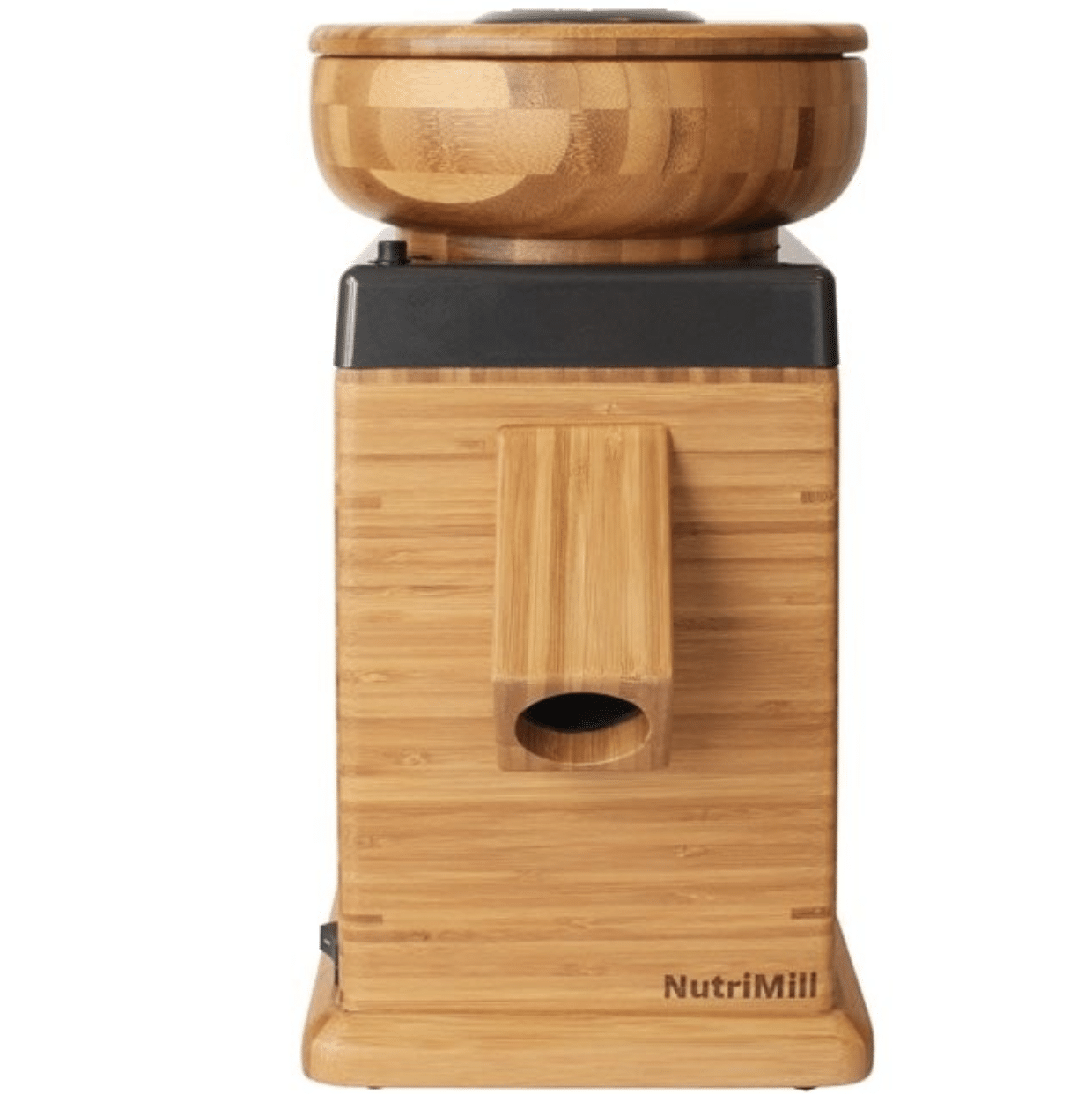

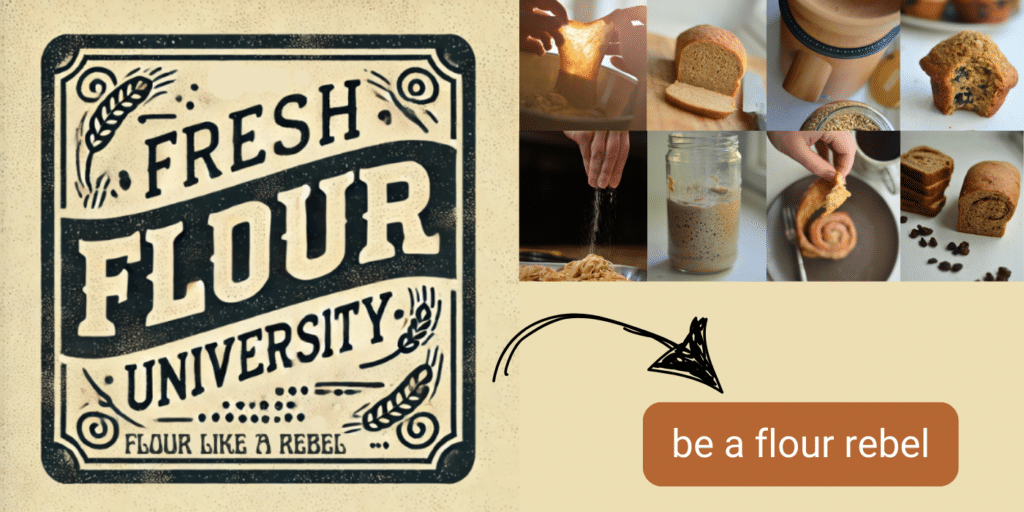
GAME CHANGER!!!!
for sure!
Now I want to explore all these ideas! I love the rootedness of using a grain that has been a staple for generations.
I totally agree… Now that’s real food, right?
I’d love to have pasta with more nutrients in it. I just started making my own but I used all purpose flour with a little 00 from the store.
Anything homemade is better and more nutritious than store bought! Kudos to you for making your own pasta–that’s awesome!
Well! I’ve heard the buzz, but now I’m fully intrigued by all of the things Einkorn can do.
I’ve never used it solo, I’ve mixed it with hard red and hard white for a delicious wheat bread but have never tried it alone.